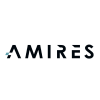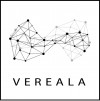The “Advanced (Nano)Materials and Technologies: science, research & innovation for safety and sustainability” Summit 2024 (ANTHOS 2024) initiated, organised and implemented by NIA member BioNanonet took place from 4 – 7 March 2024 in Vienna, to promote the results of the NMBP15 projects (SabyNA. SABYDOMA, ASINA, SbD4Nanoand to foster uptake of those to the on-going NMBP16 projects (SUNSHINE, HARMLESS and DIAGONAL). Representatives from the IRISS and PARC projects, the European Commission, OECD and National Organisations also attended. The presentations covered the implementation of Safe and Sustainable by Design (SSbD) in the different projects both conceptual and in the form of e-infrastructures which were demonstrated on-site. All projects followed the main SSbD framework from the European Commission, even if adapted to their specific case studies (based on sectors). The SABYDOMA project organised a technology showcase to demonstrate the results of the 4-year project, materialised as a nanoparticle production line coupled to a cell line screening platform, to investigate on-line the toxicological effects of nanoparticles on living cells. The legal aspects of the implementation of SSbD and its relationship to hard and soft regulation was also presented. It was highlighted that currently SSbD is only a tool for innovation to facilitate the implementation of Green Deal Goals and it is not the ambition of the EU Commission to implement SSbD into regulation in the future.
At the SABYDOMA session the NIA through Dr Sean Kelly and Dr Blanca Suarez-Merino participated in a panel on the “Stakeholder Perspective of Safe-and-Sustainable by Design – a bigger picture which included panelists from industry (NIA, CEFIC), NGOs (ChemSec), European Commission (JRC), Academia (University of Birmingham) among others. The panelists discussed the use of the SSbD approach as voluntary, where it may only be used if it represents an advantage to European industry. It was acknowledged that SSbD has penetrated the industrial landscape faster in the past months, as opposed to the situation encountered in the first SSbD workshop, hosted by the EU in 20214, and that industry was keen to support the effort though the development of in-house approaches. However, the NIA highlighted that the concept is still in its infancy, and so far, sends confusing information to industry, who are at lost with so many approaches, coming out from different EU projects. The SSbD approach does need to show how it can be used in industry as a useful approach to innovation, giving companies at the early stage of materials innovations some tools to help make decisions around safety sustainability, it was, however, correct that the SSbD approach was very far from being used to ensure regulatory compliance.
On-going projects such as HARMLESS and SUNSHINE presented their current e-infrastructure to implement SSbD for Advanced Materials (AdMa), focusing on High Aspect Ratio Nanomaterials (HARNs) and Multicomponent Nanomaterials (MCNM), both as examples of AdMa. The projects presented the use of Integrated Approaches to Testing and Assessment (IATAs) to address grouping of MCNM as a way to facilitate SSbD implementation. One such example was provided by HARMLESS on the leachate mass coupled with functionality to address grouping of perovskites and quantum dots. HARMLESS used genomics and QSAR tools to address grouping and questioned the costs and time to implement such technologies in the industrial setting.
Regarding tools to implement SSbD both projects presented a questionnaire approach to address early innovation stages, while the DIAGONAL project presented an approach based on in vitro testing at early development stages. One conclusion of the conference was that current tools are too data-demanding for early innovation stages and that standardisation of the SSbD concept is very much needed for industrial implementation.
The European Commission presented the next steps of their SSbD Framework, currently being tested in several EU projects. A testing period will close in June 2024 and a new workshop will be organised by the European Commission in the fourth quarter of 2024. During 2025, the European Commission will devote their time to analyse input from EU projects and update their Framework, though the possibility for open communication channels on SSbD between EU projects, industry, and the JRC during 2025.
The European Commission also presented their Advanced Materials for Industrial Leadership plan5, published 27th February 2024 and which seeks to set the ground to implement a European dynamic, secure and inclusive materials ecosystem to ensure leadership in research and to fast-track innovations to market, whilst ensuring sustainability and protection of human health and the environment. The EU is currently setting up a plan to raise private funding to achieve their Industrial leadership plan goals.
The NIA contributes to the development of SSbD approaches which address industrial needs through its participation in relevant EU projects, workshops, and direct discussions with the European Commission JRC and DG-RTD. We have already commented upon the Commission’s communication on Advanced Materials Leadership and the NIA plans to start speaking with members on SSbD to gather input for a future opinion on SSbD and its use and application in industry. As it stands, the NIA believes that the number of activities within Europe producing SSbD frameworks, tools and approaches is confusing for industry and makes it difficult to understand how to apply an SSbD approach. Also at the current time, there is still the SSbD Framework developed by the European Commission, which does not always work for nanomaterials, as there is still a lack of available tools that can be applied to nanomaterials.
For further information please contact Dr Sean Kelly (sean.kelly@nanotechia.org) or Dr Blanca Suarez-Merino (blanca.suarez@nanotechia.org)



















